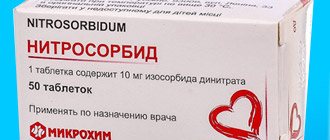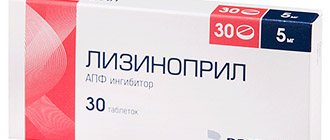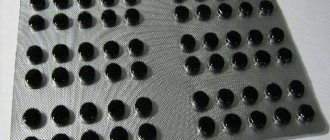Moxifloxacin tablet p/o 400 mg N5 (Vertex)
In some cases, after the first use of the drug, hypersensitivity and allergic reactions may develop, which should be reported to your doctor immediately. Very rarely, even after the first use of the drug, anaphylactic reactions can progress to life-threatening anaphylactic shock. In these cases, treatment with moxifloxacin should be discontinued and the necessary therapeutic measures (including anti-shock) should be taken. QT interval prolongation may occur in some patients when using moxifloxacin. Moxifloxacin should be used with caution in women and elderly patients. Because women have a longer QT interval than men, they may be more sensitive to drugs that prolong the QT interval. Elderly patients are also more susceptible to drugs that affect the QT interval. The degree of QT interval prolongation may increase with increasing drug concentrations, so the recommended dose should not be exceeded. However, in patients with pneumonia, no correlation was observed between moxifloxacin plasma concentrations and QT interval prolongation. Prolongation of the QT interval is associated with an increased risk of ventricular arrhythmias, including polymorphic ventricular tachycardia. None of the 9,000 patients treated with moxifloxacin experienced cardiovascular events or deaths associated with QT prolongation. However, in patients with conditions predisposing to arrhythmias, the risk of developing ventricular arrhythmias may be increased when using moxifloxacin. In this regard, moxifloxacin is contraindicated in patients with established prolongation of the QT interval, patients with uncorrected hypokalemia, and patients taking drugs that prolong the QT interval (see section “Interaction with other drugs”). Due to the risk of additive effects on the QT interval, moxifloxacin is contraindicated in patients with conditions predisposing to arrhythmias, such as clinically significant bradycardia, clinically significant heart failure, rhythm disturbances accompanied by clinical symptoms, acute myocardial ischemia; patients with liver cirrhosis (since in this category of patients the risk of developing QT prolongation cannot be excluded). Cases of fulminant hepatitis, potentially leading to liver failure (including fatal cases), have been reported while taking moxifloxacin (see section "Side effects"). The patient should be informed that if symptoms of liver failure occur, it is necessary to consult a doctor before continuing treatment with moxifloxacin. Cases of bullous skin lesions (Stevens-Johnson syndrome, toxic epidermal necrolysis) have been reported when taking moxifloxacin. The patient should be informed that if symptoms of skin or mucous membrane lesions occur, they should consult a doctor before continuing treatment with moxifloxacin. The use of quinolone drugs is associated with a possible risk of developing seizures. Moxifloxacin should be used with caution in patients with diseases of the central nervous system and with conditions suspected of involving the central nervous system, predisposing to seizures or lowering the threshold for seizure activity. The use of broad-spectrum antibacterial drugs, including moxifloxacin, is associated with the risk of developing antibiotic-associated pseudomembranous colitis. This diagnosis should be kept in mind in patients who develop severe diarrhea during treatment with moxifloxacin. In this case, the drug should be discontinued and appropriate therapy should be immediately prescribed. Drugs that inhibit intestinal motility are contraindicated in the development of severe diarrhea. Moxifloxacin should be used with caution in patients with myasthenia gravis due to possible exacerbation of the disease. During therapy with quinolones, including moxifloxacin, tendonitis and tendon rupture may develop, especially in elderly people and patients receiving glucocorticosteroids. Cases have been described that occurred within several months after completion of treatment. At the first symptoms of pain or inflammation at the site of injury, you should stop taking the drug and unload the affected limb. When using quinolones, photosensitivity reactions are observed. However, during preclinical and clinical studies, as well as when using moxifloxacin in practice, no photosensitivity reactions were observed. However, patients receiving moxifloxacin should avoid direct sunlight and ultraviolet light. The use of the drug in patients with complicated inflammatory diseases of the pelvic organs (for example, associated with tubo-ovarian or pelvic abscesses) is not recommended. The use of moxifloxacin is not recommended to treat infections caused by methicillin-resistant Staphylococcus aureus (MRSA). In cases of suspected or confirmed infections caused by MRSA, treatment with appropriate antibacterial drugs should be prescribed (see section "Pharmacodynamics"). The ability of Moxifloxacin to inhibit the growth of mycobacteria may cause in vitro interaction of moxifloxacin with the test for Mycobacterium spp., leading to false negative results when analyzing samples from patients who are being treated with moxifloxacin during this period. In patients treated with quinolones, including moxifloxacin, cases of sensory or sensorimotor polyneuropathy leading to paresthesia, hypoesthesia, dysesthesia or weakness have been described. Patients treated with moxifloxacin should be warned to seek immediate medical attention before continuing treatment if symptoms of neuropathy, including pain, burning, tingling, numbness or weakness, occur (see section "Side Effects"). Psychiatric reactions can occur even after the first prescription of fluoroquinolones, including moxifloxacin. In very rare cases, depression or psychotic reactions progress to the occurrence of suicidal thoughts and behavior with a tendency to self-harm, including suicide attempts (see section "Side effects"). If patients develop such reactions, the drug should be discontinued and the necessary measures taken. Caution must be exercised when prescribing moxifloxacin to patients with psychosis and patients with a history of mental illness. Due to the widespread and increasing incidence of infections caused by fluoroquinolone-resistant Neisseria gonorrhoeae, moxifloxacin monotherapy should not be used in the treatment of patients with pelvic inflammatory diseases. Unless the presence of fluoroquinolone-resistant N. gonorrhoeae is excluded. If the presence of fluoroquinolone-resistant N. gonorrhoeae cannot be excluded, consideration should be given to supplementing empiric moxifloxacin therapy with an appropriate antibiotic that is active against N. gonorrhoeae (eg, a cephalosporin). Effect of the drug on the ability to drive vehicles and other mechanisms: Fluoroquinolones, including moxifloxacin, may impair the ability of patients to drive a car and engage in other potentially hazardous activities that require increased attention and speed of psychomotor reactions due to their effect on the central nervous system.
Pharmacological properties of the drug Moxifloxacin
Antibacterial drug of the fluoroquinolone group. Has a bactericidal effect. The mechanism of action is due to the inhibition of bacterial topoisomerases II and IV, which leads to disruption of the DNA synthesis of the microbial cell. In vitro, it is active against a wide range of gram-negative and gram-positive bacteria, anaerobes, acid-fast bacteria and atypical forms, including Mycoplasma, Chlamydia, Legionella. Effective against bacteria resistant to β-lactam and macrolide antibiotics. Gram-positive bacteria are sensitive to moxifloxacin - Staphylococcus aureus (including strains sensitive to methicillin), Streptococcus pneumoniae (including strains resistant to penicillin and macrolides), Streptococcus pyogenes (group A), Streptococcus milleri, Streptococcus mitior , Streptococcus agalactiae, Streptococcus dysgalactiae, Staphylococcus cohni, Staphylococcus epidermidis (including strains sensitive to methicillin), Staphylococcus haemolyticus, Staphylococcus hominis, Staphylococcus saprophyticus, Staphylococcus simulans, Corynebacterium diphtheriae ; gram-negative bacteria - Haemophilus influenzae (including strains producing β-lactamases), Haemophilus parainfluenzae, Klebsiella pneumoniae, Moraxella catarrhalis (including strains producing β-lactamases), Escherichia coli, Enterobacter cloacae; Bordetella pertussis, Klebsiella oxytoca, Enterobacter aerogenes, Enterobacter agglomerans, Enterobacter intermedius, Enterobacter sakazakii, Proteus mirabilis, Proteus vulgaris, Morganella morganii, Providencia rettgeri, Providencia stuartii; anaerobic bacteria - Bacteroides distasonis, Bacteroides eggerthii, Bacteroides fragilis, Bacteroides ovatus, Bacteroides thetaiotaomicron, Bacteroides unoformis, Fusobacterium spp., Porphyromonas spp. (including Porphyromonas anaerobus, Porphyromonas asaccharolytica, Porphyromonas magnus), Prevotella spp., Propionibacterium spp., Clostridium perfringens, Clostridium ramnosum . Moxifloxacin is also active against Chlamydia pneumoniae, Mycoplasma pneumoniae, Legionella pneumophila, Caxiella burnettii . It has a clinically significant post-antibiotic effect against gram-positive and gram-negative microorganisms (on average 2 hours). When taken orally, it is quickly and almost completely absorbed from the gastrointestinal tract (food intake does not affect the absorption of moxifloxacin). Absolute bioavailability is 86–92%. The maximum concentration in the blood serum is reached after 1–2.5 hours and after oral administration of 400 mg of moxifloxacin is 2.5–4.98 mg/l. Plasma protein binding is 39.4–48%. It is well distributed in tissues and body fluids, the volume of distribution is 3–3.5 l/kg. Creates high concentrations in bronchial secretions, alveolar macrophages, the mucous membrane of the maxillary sinus and bronchial secretions, which exceed the level of moxifloxacin in the blood. Metabolized in the liver without the participation of the cytochrome P450 system with the formation of two inactive metabolites - acetyl glucuronide and N-sulfate, the first of which binds to proteins by 89.5%, and the second practically does not bind to albumin (4.8%). The half-life is 12–14 hours. Total clearance is 254 ml/min, renal clearance is 50 ml/min. 42% is excreted in the urine (22% unchanged, 20% in the form of metabolites), as well as in bile (12% unchanged, 27% in the form of metabolites).
Side effects of the drug Moxifloxacin
From the digestive system: often - abdominal pain, nausea, diarrhea, vomiting, dyspepsia, taste disturbances, changes in the results of liver function tests; rarely - dry mouth, flatulence, constipation, candidiasis of the oral mucosa, anorexia, stomatitis, glossitis, gastrointestinal dysfunction; in some cases - gastritis, discoloration of the tongue, dysphagia, transient jaundice. From the central nervous system and peripheral nervous system: often - headache, dizziness; rarely - insomnia, nervousness, drowsiness, anxiety, tremor, paresthesia; in isolated cases - hallucinations, depersonalization, increased muscle tone, coordination disorders, agitation, amnesia, aphasia, emotional lability, sleep disorders (including parasomnias), speech disorders, cognitive impairment, hypoesthesia, convulsions, confusion, depression. From the cardiovascular system: often - prolongation of the QT in patients with concomitant hypokalemia; rarely - tachycardia, hypertension (arterial hypertension), palpitations, prolongation of the QT with normal potassium levels in the blood serum; in some cases - arterial hypotension, vasodilation, peripheral edema. From the blood system: rarely - leukopenia, increased prothrombin time, eosinophilia, thrombocytosis; in isolated cases - decreased thromboplastin levels, decreased prothrombin time, thrombocytopenia, anemia. Metabolism: rarely - increased amylase activity; in isolated cases - hyperglycemia, hyperuricemia, increased LDH activity. From the musculoskeletal system: rarely - arthralgia, myalgia; in isolated cases - arthritis, tendinopathy. From the respiratory system: rarely - shortness of breath; in isolated cases - BA. From the reproductive system: rarely - vaginal candidiasis, vaginitis. From the urinary system: in isolated cases - impaired renal function. From the senses: in isolated cases - visual impairment, amblyopia, loss of taste sensitivity, parosmia. On the skin: rarely - rash, itching, increased sweating. Allergic reactions: in isolated cases - urticaria. Local reactions: often - swelling, allergic reactions, inflammation, pain in the area of drug administration, rarely - phlebitis at the infusion site. Other: rarely - asthenia, candidiasis, general discomfort, chest pain; in some cases - pain in the pelvis, swelling of the face, back pain, abnormal laboratory tests, pain in the legs.
What is better than analogues?
Moxifloxacin has a number of significant advantages that distinguish it from numerous analogues. First of all, the drug is presented in several dosage forms at once, which is very convenient. The drug does not interact with food and can be taken at any time of the day.
Moxifloxacin price varies from 100 UAH for a blister with five tablets to 560 UAH for a bottle of solution for intravenous infusion. The price range makes this medicine accessible to the masses.
Moxifloxacin overdose, symptoms and treatment
There were no side effects observed in healthy volunteers with single use of moxifloxacin in doses of up to 1.2 g or at a dose of 600 mg/day for 10 days. In case of overdose, symptomatic therapy is carried out in accordance with the clinical situation. In case of oral overdose of moxifloxacin, it is advisable to use activated carbon. After intravenous administration, activated charcoal slightly (approximately 20%) reduces the systemic exposure of moxifloxacin.
List of pharmacies where you can buy Moxifloxacin:
- Moscow
- Saint Petersburg
Mode of application
Adults are recommended to take one tablet (400 mg) of moxifloxacin per day.
The tablets should be taken without chewing, with plenty of water. The drug can be taken regardless of meal time.
Duration of therapy
The duration of therapy with the tablet form of moxifloxacin depends on the type of infection and is:
- exacerbation of chronic obstructive pulmonary disease, including with bronchitis - 5-10 days;
- community-acquired pneumonia - 10 days;
- acute bacterial sinusitis - 7 days;
- moderate to moderate pelvic inflammatory diseases - 14 days.
According to clinical studies, the duration of treatment with the tablet form of moxifloxacin was up to 14 days.
Stepped (intravenous oral) therapy
According to clinical studies, with stepwise therapy, most patients switched from intravenous to oral moxifloxacin within 4 days (community-acquired pneumonia) or 6 days (complicated infections of the skin and subcutaneous tissues). The recommended total duration of treatment with moxifloxacin tablets and solution for infusion is 7-14 days for community-acquired pneumonia and 7-21 days for complicated infections of the skin and subcutaneous tissues.
Note!
The description of the drug Moxifloxacin on this page is a simplified author’s version of the apteka911 website, created on the basis of the instructions for use.
Before purchasing or using the drug, you should consult your doctor and read the manufacturer's original instructions (attached to each package of the drug). Information about the drug is provided for informational purposes only and should not be used as a guide to self-medication. Only a doctor can decide to prescribe the drug, as well as determine the dose and methods of its use.
Features of application
Drivers
No studies have been conducted on the effect of moxifloxacin on the ability to drive vehicles and operate machinery. However, fluoroquinolones, including moxifloxacin, may lead to a deterioration in the ability to drive vehicles or operate machinery due to reactions from the central nervous system (for example, dizziness, acute temporary loss of vision) or acute short-term loss of consciousness (fainting). Patients should be advised to monitor their response to moxifloxacin before driving or operating machinery.





